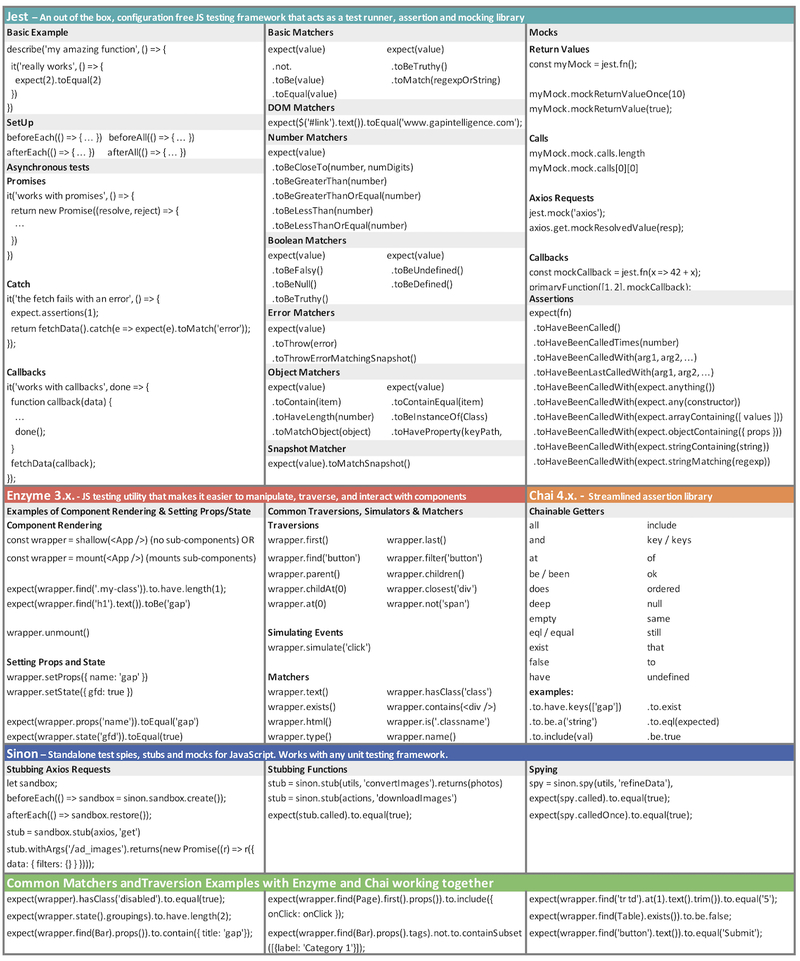This is my summary of the bare minimum steps as a quick-ref cheatsheet for adding Redux to an existing React app. This is just some notes for future reference. If you’re looking for tutorials, take a look at:
Here’s my quickref:
React Cheat Sheet 2020 Printable
The React Cheatsheet for 2020 📄 (+ real-world examples) Resource. Posted by 21 days ago. The React Cheatsheet for 2020 📄 (+ real-world examples). Jan 24, 2020 4 min read With the introduction of React hooks since the 16.8 version, we have changed the way we write React application. Indeed, we can now leverage React features, such as state.
Add Redux devtools for Chrome (see here):
Wrap <Provider> around root Component to share the Store with all child components:
Implement mapStateToProps and mapDispatchToProps to pass store and dispatch() as props to each Component, and call connect() to connect each Component with your Redux Store:
Create a Store:
Create reducers for Store – here’s an example that take the the value of a label from the passed action payload and sets it in the Store – remember the state of the store is always treated as immutable, so always create a new copy of the modified state, here using Object.assign():

Implement an action creator that builds an Action object that requests changes to the Store – each action has a type and a payload:
React Interview Questions 2020
Implement mapDispatchToProps – you can either build the Action object yourself here, or call an Action creator like the above example:

Pass mapDispatchToProps to your connect() call shown earlier.
As a comparison, here’s a simple React app using Flux:
… and here’s the same app converted to use Redux:
Winrar password remover rar. Done!
